Monarch Jewels are handpicked to design a meticulous blend of best size and brilliance possible. Our ultimate motive is to produce conflict free diamonds, and in the process, making this world a better place to live.
Our best Collection Jewellery

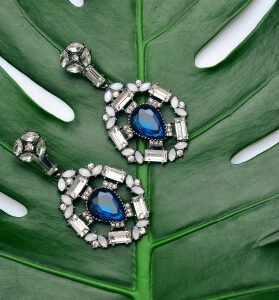
I am text block. Click edit button to change this text. Lorem ipsum dolor sit amet, consectetur adipiscing elit. Ut elit tellus, luctus nec ullamcorper mattis, pulvinar dapibus leo.
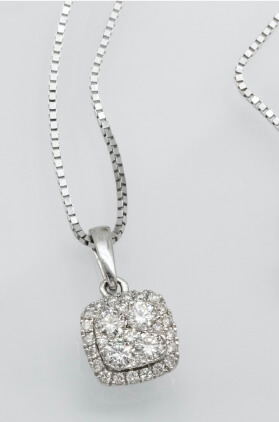
THE 4Cs OF DIAMONDS

To simplify the subject of diamond grading, the 4Cs relate to cut, colour, clarity and carat weight – a universal language that was established with the Gemmological Institute of America (GIA). The combination of these factors determines a diamond’s relative rarity and value. By hand and eye, we focus on the beauty of each and every diamond, because a natural diamond should never be purchased purely on its laboratory grading report.
CARAT WEIGHT

A metric ‘carat’ is defined as 200 milligrams. Each carat can be subdivided into 100 ‘points’. This allows very precise measurements to the hundredth decimal place. The weight of a diamond below one carat can also be described by its ‘points’ alone. For instance, a diamond that weighs 0.25 carats could also be referred to as a ‘twenty-five pointer’. Diamond weights greater than one carat are expressed in carats and decimals. A 1.08 carat stone would be described as ‘one point oh eight carats’.
All else being equal, diamond price increases with carat weight, because larger diamonds are more rare and more desirable. But two diamonds of equal carat weight can have very different values (and prices) depending on three other factors within the 4Cs: clarity, color and cut.
COLOR GRADE
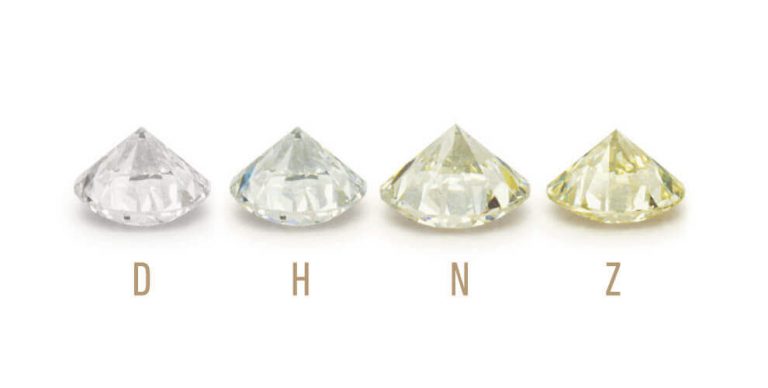
A chemically pure and structurally perfect diamond has no hue, and consequently, a higher value. The Color Grading System measures the degree of colorlessness by comparing a stone, under controlled lighting and precise viewing conditions, to masterstones of established color value. Many of these color distrinctions are so subtle that they are invisible to the untrained eye; however, these distinctions make a very big difference in diamond quality and price.
The Color Grading Scale is the industry’s most widely accepted grading system.
COLOR SCALE
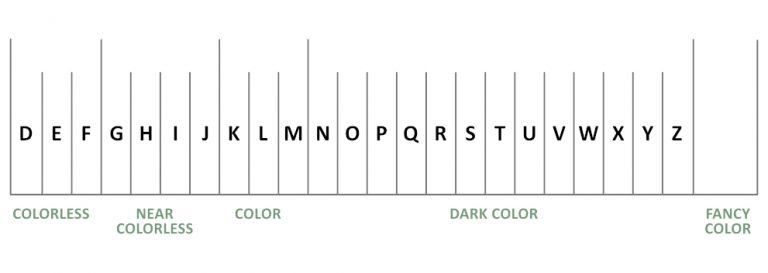
BROWN COLOR

YELLOW COLOR

CLARITY GRADE

Evaluating diamond clarity involves determining the number, size, relief, nature and position of these characteristics, as well as how these affect the overall appearance of the stone. While no diamond is perfectly pure, the closer it comes, the higher its value.
Many inclusions and blemishes are too tiny to be seen by anyone other than a trained diamond grader. To the naked eye, a Vs1 and an Si2 diamond may look exactly the same, but these diamonds are quite different in terms of overall quality. This is why expert and accurate assessment of clarity is extremely important.
CLARITY GRADE

VS1 AND VVS2 CLARITY
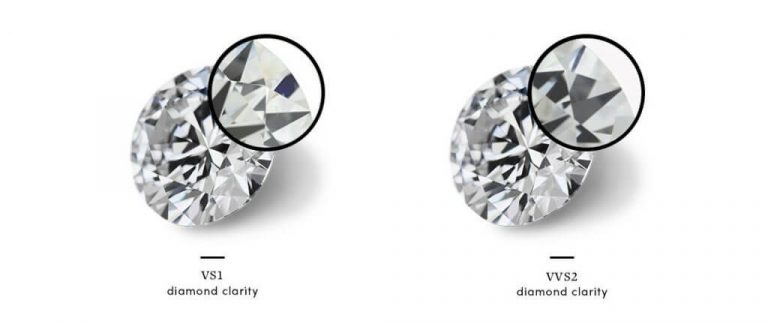
CUT GRADE

The quality of cut is crucial to the diamond’s final beauty and value. Of all the 4Cs, it is the most complex and technically difficult to assess.
The GIA Cut Grading System for the standard round brilliant diamond evaluates seven components. The first three, brightness, fire and scintillation, consider the diamond’s overall face-up appearance. The remaining four, weight ratio, durability, polish and symmetry, assess a diamond’s design and craftsmanship.
- Brightness : Internal and external white light reflected from a diamond
- Fire : The scattering of white light into all the colors of the rainbow
- Scintillation : The sparkle a diamond produces, and the pattern of light and dark areas caused by reflections within the diamond
The design and craftsmanship of the diamond considers weight ratio (weight of the diamond relative to its diameter), the diamond’s girdle thickness (which affects its durability), the symmetry of its facet arrangement, and the quality of polish on those facets.
Cut is oftentimes confused with the shape of the diamond. The most common diamond shape used in jewelry is the standard round brilliant. All other diamond shapes are known as fancy shapes. Traditional fancy shapes include the marquise, pear, oval and emerald cuts. Princess cut, cushions, triangles and a variety of other are also gaining popularity in diamond jewelry.
VS1 AND VVS2 CLARITY

Diamond Cut

Diamond Shape

DIAMOND POLISH
Polish refers to the degree of smoothness of each facet of a diamond as measured by a gemologist. When a diamond is cut and polished, microscopic surface defects may be created by the polishing wheel as it drags tiny dislodged crystals across the diamond’s surface. Depending on the severity, these defects may disrupt light patterns as the light rays enter and exit the diamond.
Each Monarch Diamond displays the polish grade as determined by the GIA, using the following scale:
- Excellent : No polish defects visible at 10x magnification.
- Very Good : Any defects are extremely difficult to see at 10x magnification.
- Good : Any defects are difficult to see at 10x magnification.
- Fair : Defects are noticeable at 10x magnification, and may be visible to the naked eye.
- Poor : Defects are visible to the naked eye. Not offered by Monarch Jewels.
For diamonds with a polish grade of Excellent to Good, any polishing defects are not visible to the naked eye, and should have no impact on the diamond’s overall appearance.
For diamonds with clarity grades of I1 or lower, even a polish grade of Fair is acceptable, since these diamonds already possess internal inclusions that are visible to the naked eye, making any polish markings less relevant.
Poor is the only polish grade that should be avoided regardless of the size or clarity of the diamond. For this reason, Monarch Jewels does not carry diamonds with a polish grade of Poor.
DIAMOND SYMMETRY
Symmetry refers to how precisely the various facets of a diamond align and intersect. This can include extra or misshapen facets, off center culets and tables.
A diamond with poor symmetry may misdirect light that travels into the diamond, sending it off at slightly wrong angles, and thereby reducing the diamond’s brilliance. Often, a diamond cutter will purposefully allow a minor reduction in symmetry as a way of preventing a defect present in the rough stone from being retained as part of the finished diamond.
Each Monarch Diamond displays the symmetry grade as determined by the GIA, using the following scale :
For diamonds with a symmetry grade of Excellent to Good, symmetry should not be used as a primary factor in choosing a diamond, since each of these grades is possible in diamonds of exceptional appearance.
Symmetry is more important in diamonds of VVS2 Clarity and higher, since the very subtle defects produced by Fair or Poor symmetry (which can resemble pinpoint inclusions) would compromise the diamond’s otherwise flawless appearance.
Despite its modest impact on appearance, symmetry has a significant impact on price; a diamond with Excellent Symmetry and Polish may be priced 10%-15% higher than a diamond with Good Symmetry and Polish. This premium has more to do with consumer’s perceived value of “excellent” grades, than the actual effect on a diamond’s appearance.
Because diamonds with Poor symmetry have defects visible to the naked eye, these diamonds should be avoided in all cases. For this reason, Monarch Jewels does not carry diamonds with a symmetry grade of Poor.
A diamond should not be chosen or rejected based solely on symmetry. Because the overall Cut grade already incorporates symmetry, it should be used as the primary determinant when choosing a diamond. When comparing two diamonds of equal Cut grade, symmetry (and polish) can then be used as a further refinement or tie breaker.
Get in touch with us
Location
302,Parash building,
Jada khadi,Mahidarpura
Surat Gujarat
Contact us
Phone : +91 9825144792
Email : contacts@company.com
Our Hours
MON-FRI 09:00 – 19:00
SAT-SUN 10:00 – 14:00
Follow Us
Facebook
Twitter
Google-plus
Youtube
